The Cooler Master V Platinum V2 1600W ATX 3.1 PSU Review: Quiet Giant
by E. Fylladitakis on July 31, 2024 10:00 AM EST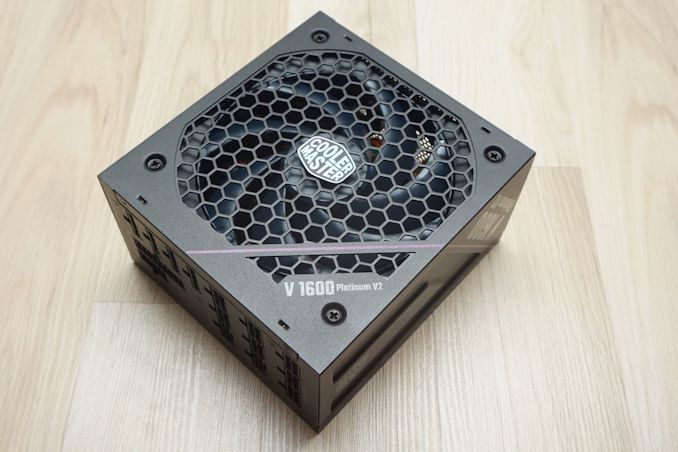
Continuing our ongoing look at the latest-generation ATX 3.1 power supplies, today we are examining Cooler Master's V Platinum 1600 V2, a recent addition to the company's expansive PSU lineup.
The V Platinum 1600 V2 is designed to cater to top-end gaming and workstation PCs while offering maximum compatibility with modern ATX directives. And while it boasts a massive 1600 Watt output and a long list of features, the V is a workhorse of a power supply rather than a flagship; Cooler Master is aiming the PSU at budget-conscious users who can't justify spending top dollar, but whom none the less need a powerful and relatively efficient (80PLUS Platinum) power supply.
So often we see PSU vendors go for broke on their high-wattage units, since there's a lot of overlap there with the premium market, so it will be interesting to see what Cooler Master can do with a slightly more modest bill of materials.
| Cooler Master V Platinum 1600 V2 Power specifications ( Rated @ 50 °C ) |
|||||
| RAIL | +3.3V | +5V | +12V | +5Vsb | -12V |
| MAX OUTPUT | 20A | 20A | 133.3A | 3A | 0.3A |
| 100W | 1599.6W | 15W | 3.6W | ||
| TOTAL | 1600W | ||||
| 80PLUS RATING | Platinum | ||||
| AC INPUT | 100 - 240 VAC, 50 - 60 Hz | ||||
| MSRP | $310 | ||||
Packaging and Bundle
The Cooler Master V Platinum 1600 V2 PSU comes in sturdy cardboard packaging with purple/magenta artwork. Although the box states that this is an ATX 3.0/PCIe 5.0 unit, Cooler Master (much like other manufacturers) informed us that they simply have not had the opportunity to change the packaging yet, and that the units inside are ATX 3.1/PCIe 5.1 compliant. The PSU is well-protected during shipping by a nylon bag and dense packaging foam, ensuring it arrives in perfect condition.
The bundle includes mounting screws, a special C19 AC power cable, a basic quick-start guide, three cable straps, and a few cable ties.
This PSU features all-black cables, with connectors and wires. The cables, except for the sleeved PCIe 12V-2x6 cables with angled connectors, consist of ribbon-like wires without any sleeving. The PCIe 12V-2x6 cables also have angled connectors on one side.
| Cooler Master V Platinum 1600 V2 | ||
| Connector type | Hardwired | Modular |
| ATX 24 Pin | - | 1 |
| EPS 4+4 Pin | - | 1 |
| EPS 8 Pin | - | 1 |
| PCI-E 5.0 | - | 2 |
| PCI-E 8 Pin | - | 5 |
| SATA | - | 16 |
| Molex | - | 4 |
| Floppy | - | - |
The Cooler Master V Platinum 1600 V2 ATX 3.1 PSU
External Appearance
The Cooler Master V Platinum 1600 V2 PSU is housed in a chassis that measures 160 mm in length, significantly longer than the standard 140 mm ATX dimensions specified by the ATX design guide. This additional length is necessary to accommodate the 135 mm cooling fan, yet despite that, this actually makes the V one of the smallest >1500-Watt units currently available.
In terms of design, Cooler Master placed significant effort on making the V Platinum 1600 V2 unit visually unique but not extravagant. It features a satin black paint job, with very subtly (and barely visible) etched artwork on the left side of the unit. The right side of the unit features brighter series and company logos, along with an embossed geometric C-like shape The top side is hosting a sticker detailing the electrical specifications and certifications.
The front side includes the standard on/off switch and the C20 AC cable receptacle, along with a sticker warning users that the fan will not activate until a significant load is reached. The rear hosts the modular cable connectors, organized for easy and error-free connections. While the connectors are not color-coded and are labeled with a basic, almost invisible legend next to each connector, they are all different and keyed, so it is practically impossible to insert a cable into the wrong connector.
Internal Design
The Cooler Master V Platinum 1600 V2 PSU includes a Cooler Master FA13525M12LAAB "Mobius" 135 mm fan with an LDB engine. This fan has a wide operational range from zero to 2400 RPM, allowing it to adapt to various thermal conditions.
The OEM behind the V Platinum 1600 V2 is Gospower. They are a relatively new OEM of power electronic products, with the company focusing mostly on solar power products. We have only encountered their platforms in Cooler Master's products so far. The overall build quality shows extensive use of glue for securing components and mediocre soldering work.
The filtering stage includes a total of four Y capacitors, two X capacitors, and two filtering inductors, which work together to ensure clean and stable power input. The two rectifying bridges are mounted on a shared heatsink with the primary inversion MOSFETs. The APFC utilizes an interleaved topology, with its active components, three MOSFETs (60R060P7) and one diode, located on a separate heatsink near the PCB edge.
Two large partially encased inductors and two 680 μF capacitors from Toshin Kogyo (TK) are the passive components of the APFC circuitry. TK is a Japanese manufacturer but their reputation is not on the same pedestal as most other Japanese companies, mainly because of some quality woes the company had with audio capacitors in the early 2010’s.
In the primary stage, the PSU employs a full-bridge LLC resonant converter design. This stage uses four Infineon 60R060P7 MOSFETs, which are crucial for high-efficiency power conversion. The heatsinks section are notable for their size and feature purple anodic coating, a design choice that matches Cooler Master’s theme but also serves functional purposes. Anodized coating can improve the heat transfer coefficient and are frequently used for advanced LED module cooling.
The secondary stage of the PSU is a synchronous rectification circuitry. The rectification circuitry is directly attached to the main transformer. Additionally, the PSU incorporates DC-to-DC converters mounted on a vertical daughterboard to generate the 3.3V and 5V output lines. The secondary side capacitors are mostly sourced from Rubycon and Nichicon, top-tier Japanese manufacturers, but we did notice a few Lelon (Taiwanese) capacitors into the mix.


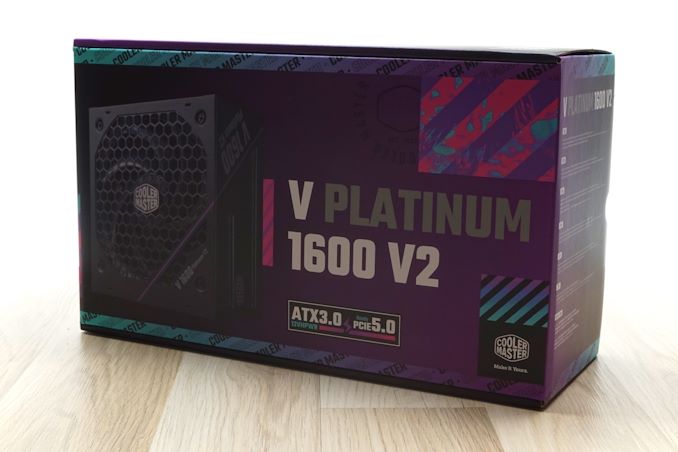
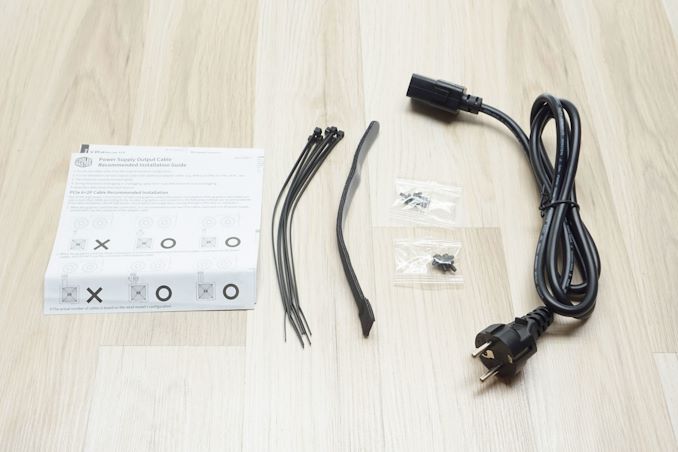
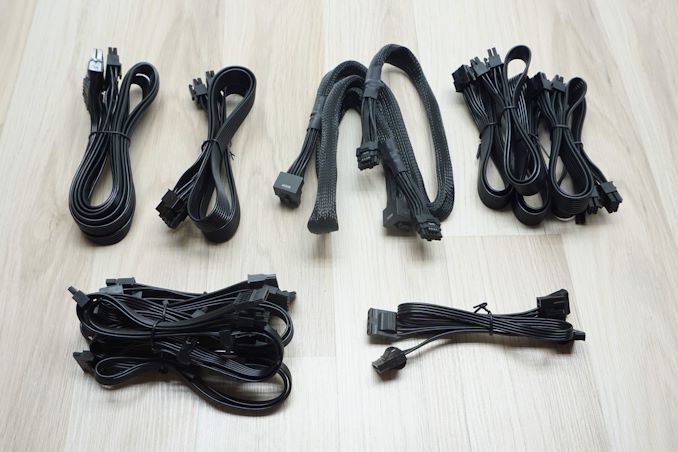
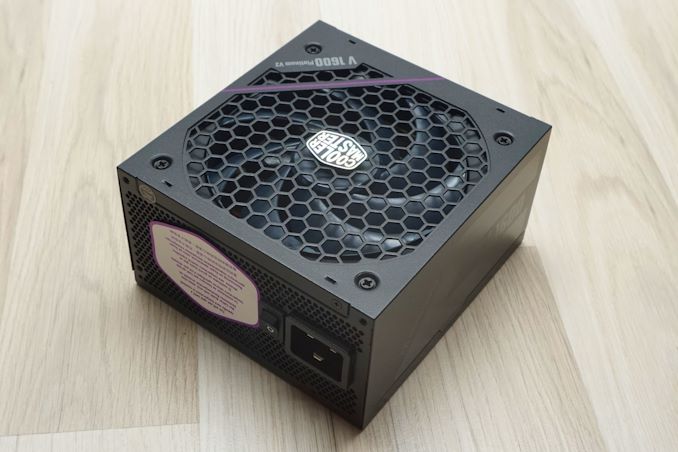
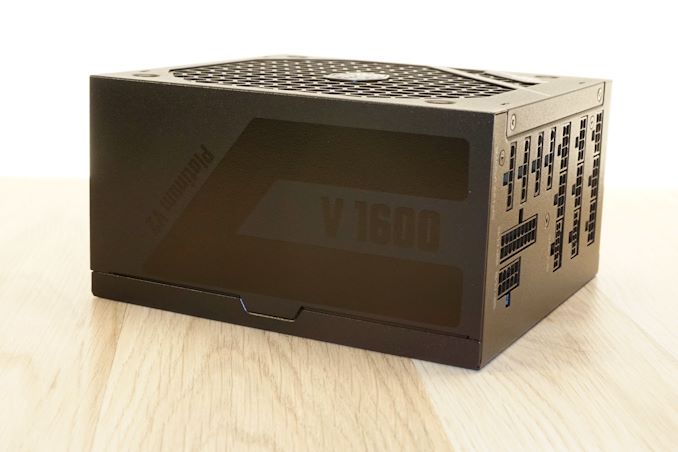
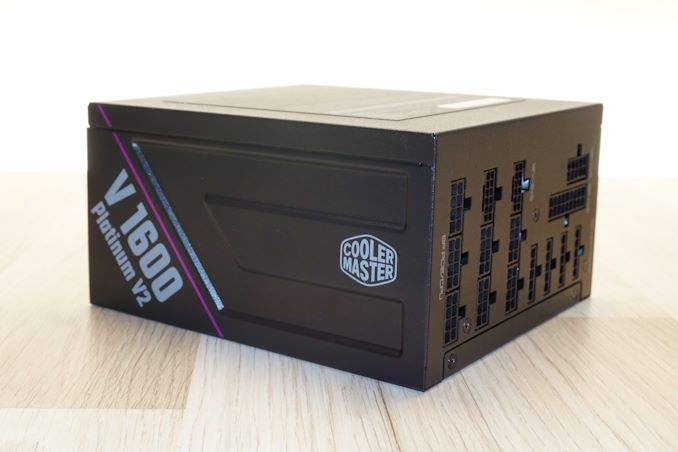
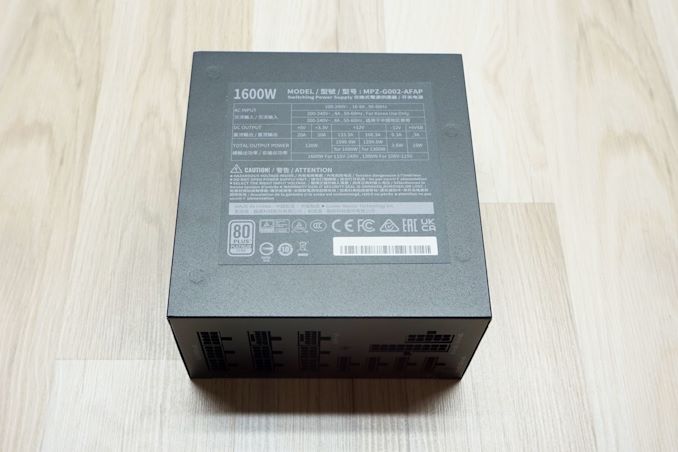
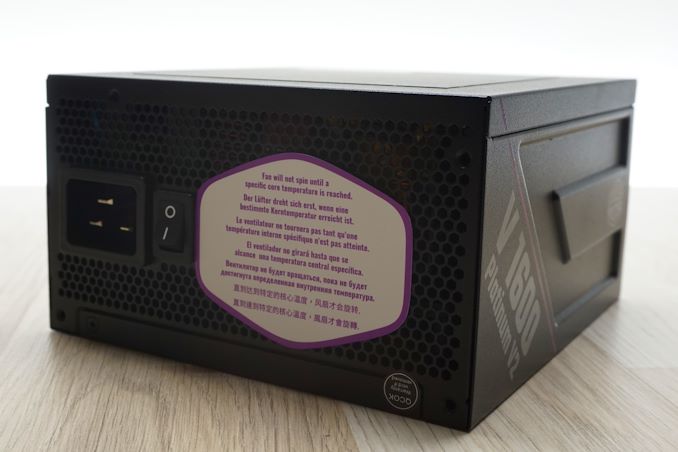
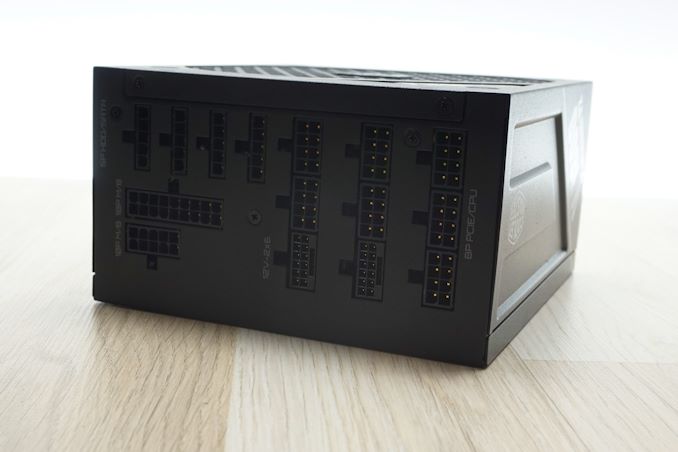
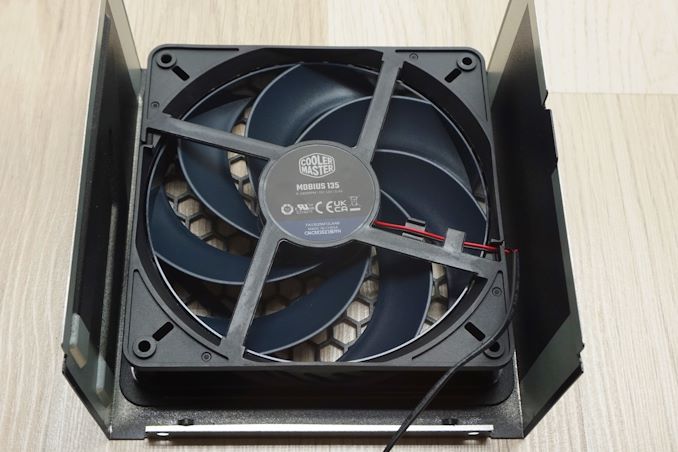
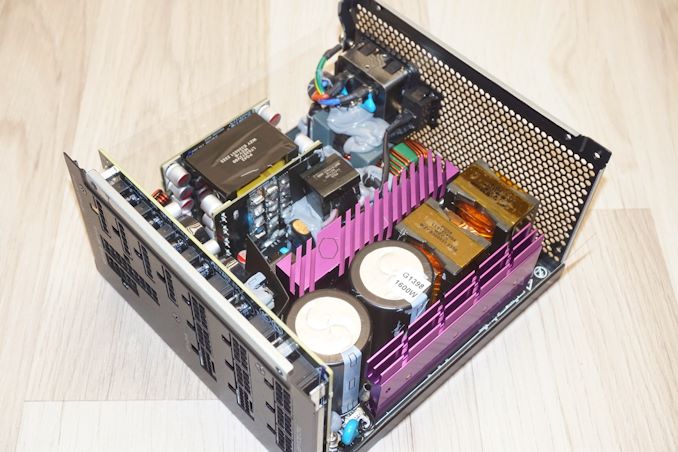
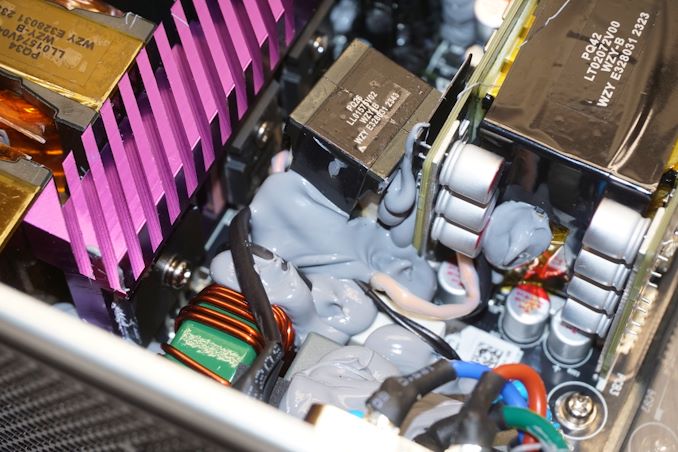
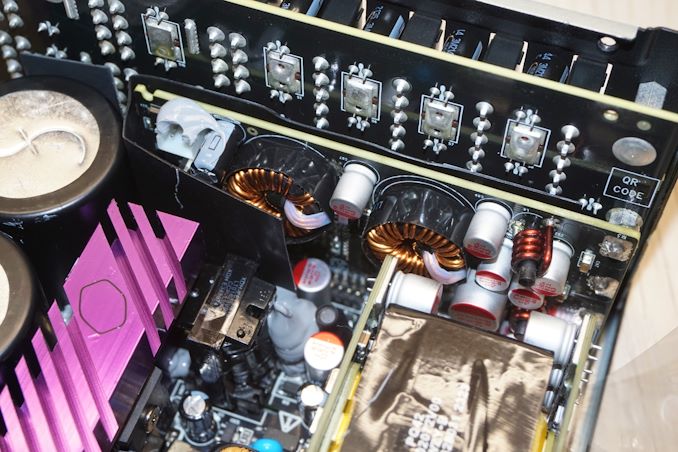
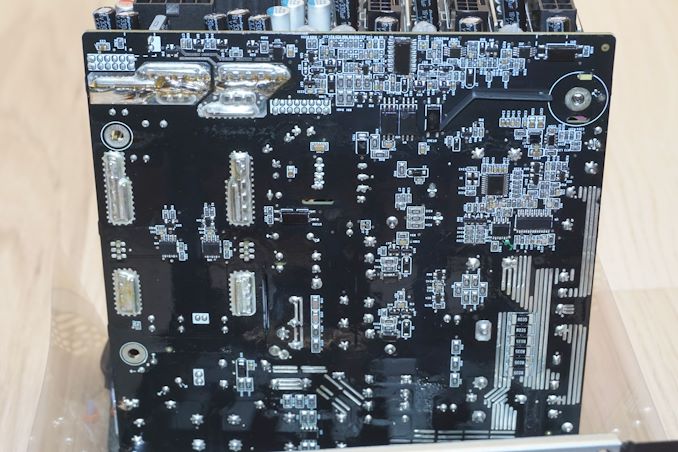
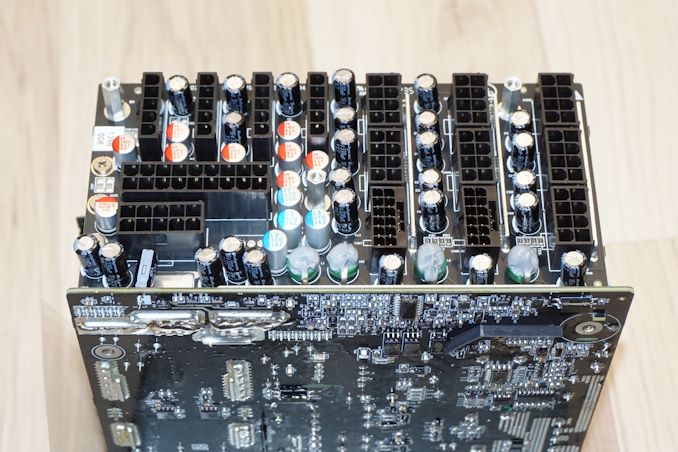








6 Comments
View All Comments
Threska - Wednesday, July 31, 2024 - link
At this rate we'll have to wire in our PCs like mainframes of old complete with water cooling.ballsystemlord - Wednesday, July 31, 2024 - link
Cooler Master should also sample this PSU to the YT'er Gamers Nexus. Steve has an opinion about glue. ;)PeachNCream - Thursday, August 8, 2024 - link
Isn't Steve the really hairy dude that used to work at HardOCP before it closed down?Oxford Guy - Thursday, August 1, 2024 - link
It’s worthwhile to spend extra on an oversized PSU if using a higher-end GPU to reduce noise.What would be nicer would be larger-than-ATX designs that use 200mm fans at very low RPMs. Cramming so many watts into small cases is an antique approach.
Khanan - Sunday, August 4, 2024 - link
Doesn’t make much sense as there’s no norm for such designs, it would first need a different standard than ATX, but your idea doesn’t make much sense in general, bigger isn’t better and the current designs work very well.Oxford Guy - Thursday, August 22, 2024 - link
Of course it makes sense. What doesn't make sense is stuffing 1300 watts into an ITX case and yet people are trying that.ATX is an ancient outdated standard. GPUs have long been the best illustration of that but even PSUs are problematic now that more people have realized that noise pollution isn't wonderful.